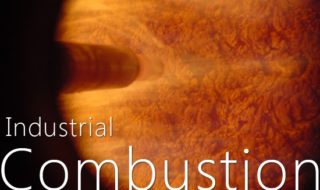-
Industrial Combustion Journal: Paper published
Date posted:
-
-
-
Post Author
Lucy StrakerIFRF Administration & Communication Coordinator
-

We are pleased to announce the latest paper to be published in our online journal – Industrial Combustion.
‘Numerical simulation of the fuel flow in the spray nozzle of the injector in a car-and-tractor diesel engine’ was written by Fedor Abramchuk of Kharkov National Automobile and Highway University, Ukraine, and supported by Andrii Avramenko of A.N. Podgorny Institute for Mechanical Engineering Problems of the NAS of Ukraine.
View Fedor Abramchuk’s paper here.
To give you an idea of this paper have a look through the abstract below:
“Investigating the fuel flow in the preorifice space and spray nozzle orifices helps to understand the impact of design and operating condition factors on processes in the spray nozzle, the conditions of onset of hydrodynamic cavitation and its impact on fuel injection and atomisation conditions, especially when working with composite fuels with an increased pressure of saturated vapours. Investigating the fuel flow in the orifices of the spray nozzle using experimental methods is challenging and costly; hence, improving the numerical simulation technique is a vital research and engineering task. The research goal is to investigate the fuel flow process in the orifices of the spray nozzle to assess the impact of design and operating factors on the conditions of an onset of hydrodynamic cavitation in the spray nozzle. In this paper, the fuel flow was simulated in Cartesian coordinates in the three-dimensional nonstationary statement. It was shown that reducing the transition radius of the orifice and nozzle preorifice space during fuel flow initiates hydrodynamic cavitation. Numerical simulation research offers recommendations on improving the spray nozzle design parameters to mitigate factors causing hydrodynamic cavitation. Effective values of the orifice and nozzle preorifice space transition radii have been chosen to reduce the likelihood of hydrodynamic cavitation during fuel injection.”
If you would like to submit your paper to the Industrial Combustion Journal you can do so through our website here.
